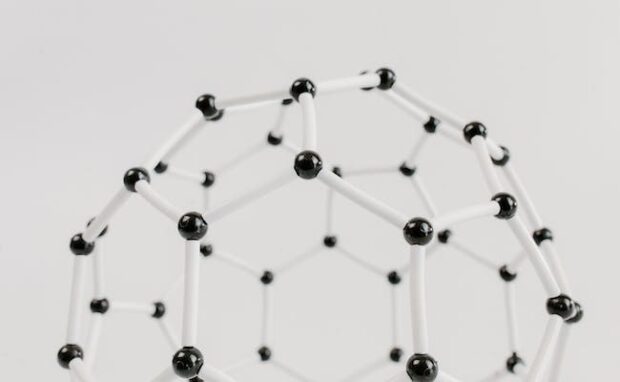Graphene oxide improves 3D-printed concrete
Researchers at RMIT University and the University of Melbourne discovered that adding graphene oxide to 3D-printing cement can boost its strength and printability. Also, the additive gives the material electrical conductivity, which could enable the creation of “smart” walls that can sense and monitor cracks in buildings.
Experts worldwide have been developing 3D-printed structures as a new construction method. One day, a 3D printer may build your new home from the ground up. However, it is not a foolproof method, so we must find ways to enhance it. Fortunately, graphene oxide could be the key to making 3D-printing homes more practical.
This article will elaborate on graphene oxide’s capacity to improve 3D-printed concrete. Later, I will show you other things graphene could do.
How does graphene oxide improve concrete?

RMIT Associate Professor and research supervisor Jonathan Tran said graphene could strengthen 3D-printed concrete. As a result, it could become a more viable option in the construction industry.
Conventional concrete structures require formwork, which involves creating a mold before pouring fresh concrete into it. Tran said this process requires a lot of time, money, and labor and usually creates a lot of waste.
On the other hand, 3D-printed concrete could become more efficient in all these areas. Moreover, it could create more complex structures and reuse construction waste.
Tran explained that graphene oxide had functional groups of various oxygen groups on its surface. These facilitated stronger bonds with cement, improving concrete’s overall strength.
Another great potential use for graphene oxide concrete was creating “smart” buildings where walls can act as sensors to detect and monitor small cracks. The research supervisor said existing methods, like acoustic and ultrasonic sensors, struggled to detect small cracks early.
Adding graphene oxide could create an electrical circuit in the concrete structure to help detect structural issues, temperature changes, and other environmental factors. However, Tran also warned about adding too much.
Excessive amounts of graphene oxide could reduce the workability and strength of a concrete mix. Interesting Engineering said concrete was a carefully balanced mixture, and the substance could disrupt that balance.
You may also like: 3D printing hair and skin is now possible
Too much graphene oxide could also reduce the flow of concrete, making it harder to extrude. Consequently, it may create gaps between layers of concrete.
Another problem was it could also clump together instead of spreading out evenly. As a result, it could create weak spots in the concrete and reduce its overall strength.
That is why the research team’s next step is to optimize the graphene oxide dosage. Also, they will test its electrical conductivity in concrete.
What are graphene’s other uses?

Graphene is a material of carbon atoms arranged in a hexagonal lattice resembling chicken wire. In 2004, University of Manchester Andre Geim and Konstantin Novoselov were experimenting with graphite, the material for pencil tips.
These are flakes of graphite that come off on the tape. Then, they folded the tape in half, put it on the flakes on top, and split them again.
They repeated this process 10 to 20 times. “Each time, the flakes split into thinner and thinner flakes. In the end, you’re left with very thin flakes attached to your tape. You dissolve the tape, and everything goes into solution,” Gelm added.
Graphene is 200 times stronger than steel and 1,000 times lighter than paper. It is also the fastest conductor of electricity at room temperature, giving it these applications:
- computer chips
- energy generation
- Supercapacitors
- antennas
- touchscreens
- DNA sequencing
- solar cells
- batteries
- transistors
- water filters
Graphene’s atomically thin structure prevents many elements like protons from passing through it. However, its edges, flaws, and functionalization can become channels for proton diffusion.
You may also like: Origami robotic gripper carries objects 16,000 times its weight
University of Manchester scientists discovered a method to speed up proton transport across graphene using light. They discovered light stimulation excites graphene’s electrons.
Next, protons can interact with these excited electrons, which speeds up their passage through the material. The breakthrough may pave the way for the creation of solar water-splitting devices and more effective hydrogen fuel cells.
“We were surprised that the photo response of our proton conducting devices could be explained by the Pauli blocking mechanism, which so far had only been seen in electronic measurements. This provides insight into how protons, electrons, and photons interact in atomically thin interfaces,” said co-author Dr. Shiqi Huang.
Conclusion
Researchers at the University of Melbourne and RMIT University discovered that graphene oxide could strengthen 3D-printed concrete. As a result, the substance could turn it into a more viable construction material.
It could also provide electrical conductivity to buildings, letting it warn people of potential structural problems. However, the researchers admitted that they must study its viability further.
Learn more about this graphene oxide study on the ScienceDirect webpage. Also, check out the latest digital tips and trends at Inquirer Tech.